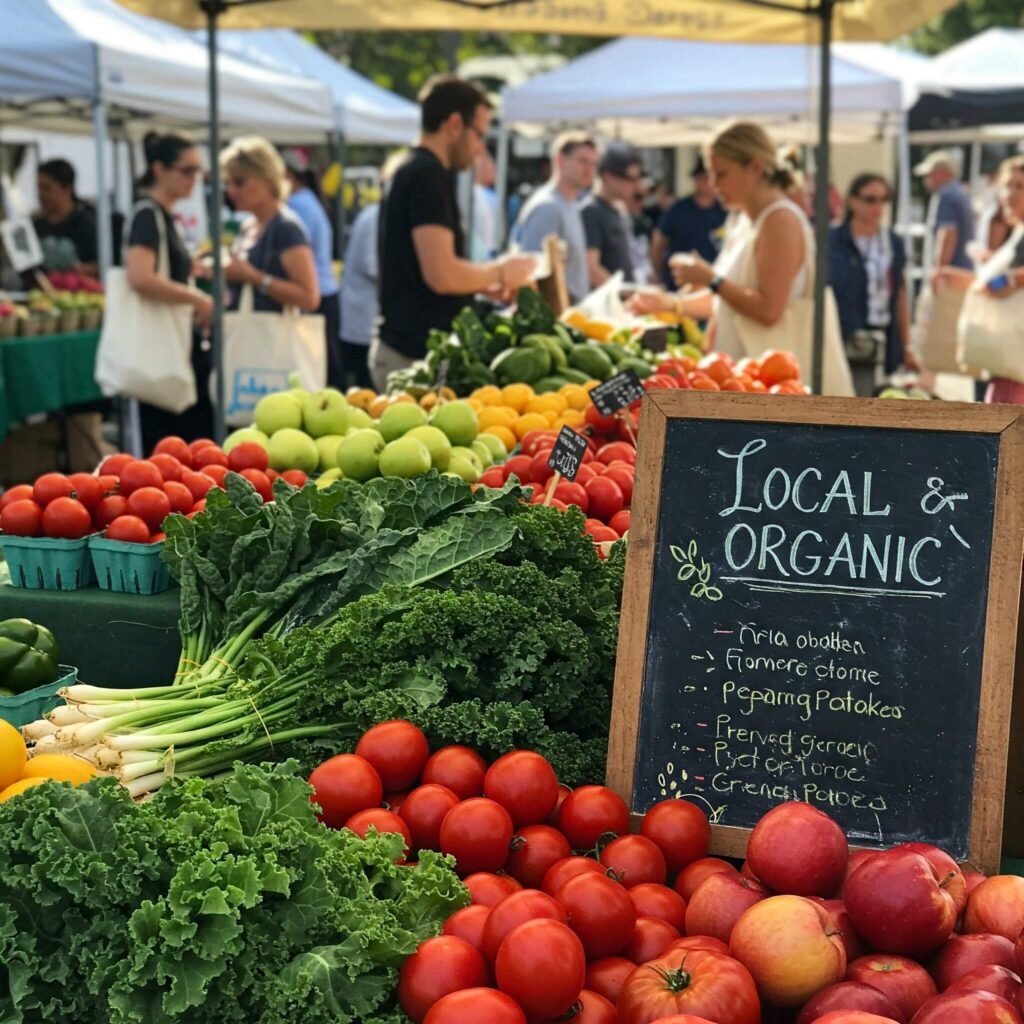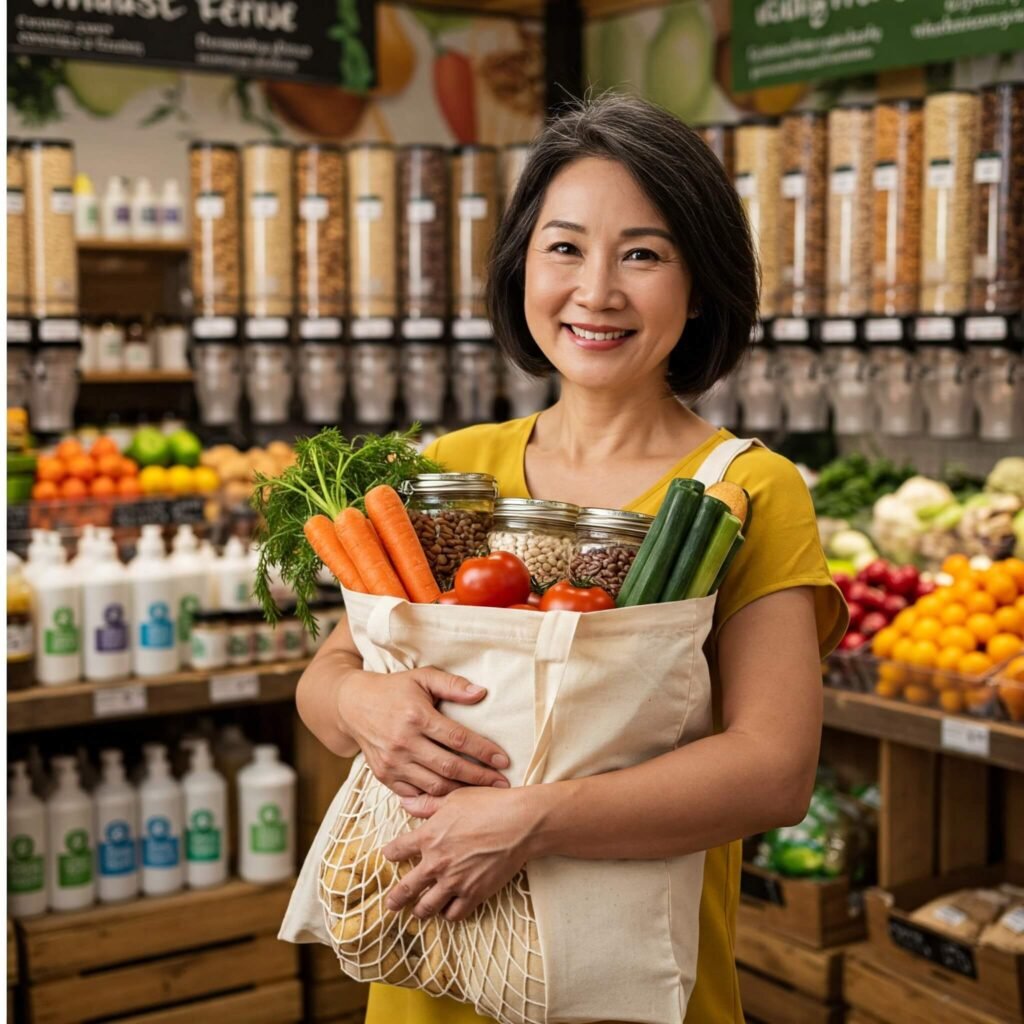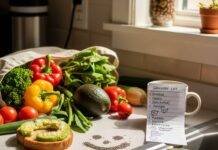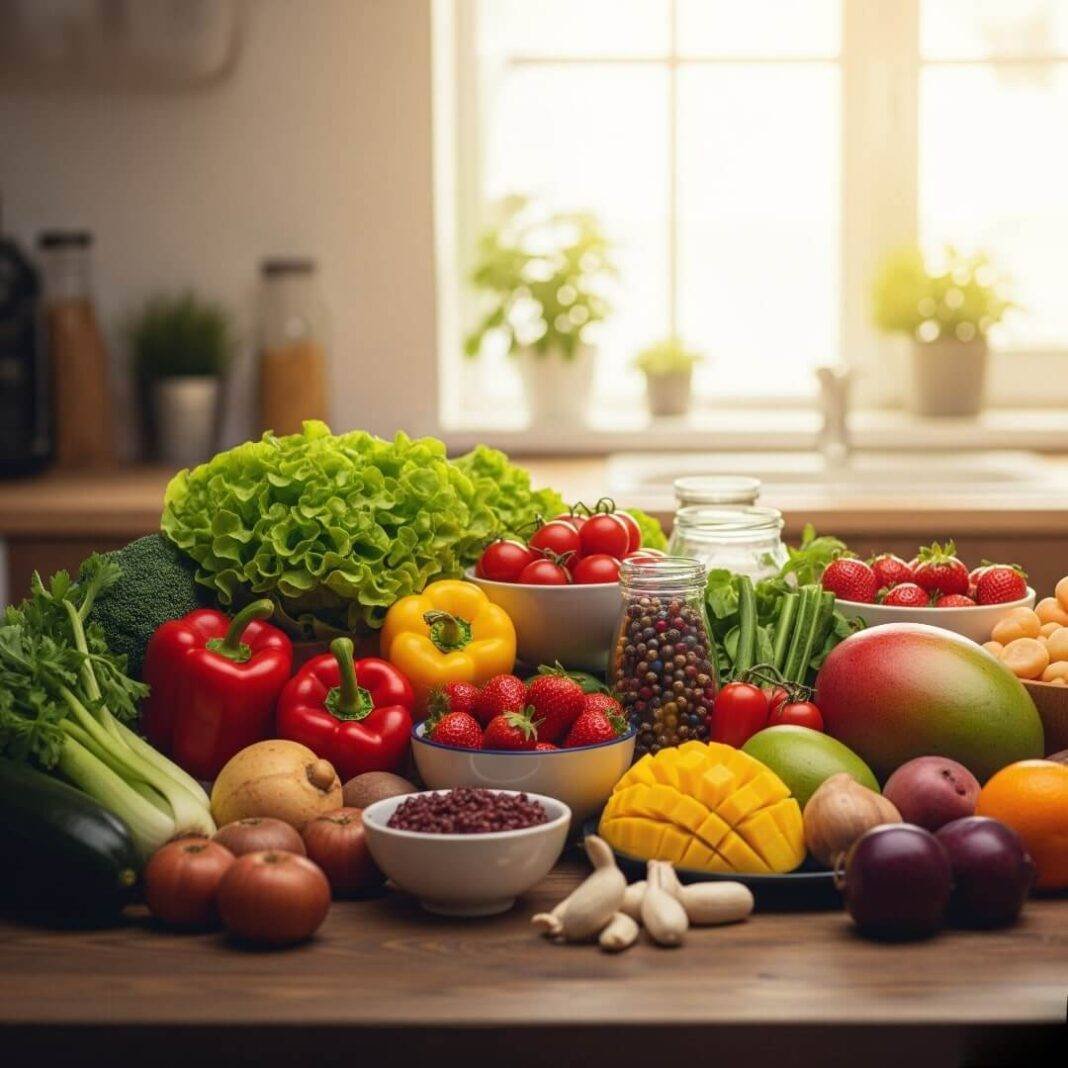In 2025, sustainable food choices are more than a trend—they’re a necessity for a healthier planet. With climate change impacting food systems, adopting eco-friendly eating habits can reduce your carbon footprint and support a greener future. This guide shares five simple ways to eat green, offering practical tips to make sustainable eating accessible and delicious. Ready to transform your diet? Let’s dive in!

1. Prioritize Plant-Based Meals for Sustainable Food Choices
Eating more plants is one of the most impactful sustainable food choices you can make. According to the World Resources Institute, plant-based diets can reduce greenhouse gas emissions by up to 50% compared to meat-heavy diets.
How to Eat Green with Plants
- Start small: Try “Meatless Mondays” with recipes like lentil tacos or chickpea curry.
- Explore variety: Incorporate legumes, whole grains, and seasonal vegetables for flavor and nutrition.
- Real-world example: In 2024, restaurants like Veggie Grill reported a 30% surge in plant-based orders, showing growing demand.
Actionable Tip: Swap one meat-based meal per week with a plant-based alternative. Apps like HappyCow can help you find vegan-friendly recipes or restaurants.
2. Shop Local and Seasonal for Eco-Friendly Food
Choosing locally grown, seasonal produce is a cornerstone of sustainable food choices. It reduces transportation emissions and supports local farmers. The USDA notes that local food systems cut energy use by up to 20%.
Benefits of Local and Seasonal Eating
- Lower carbon footprint: Less transport means fewer emissions.
- Fresher flavors: Seasonal produce is harvested at peak ripeness.
- Community support: Farmers’ markets boost local economies.
Actionable Tip: Visit a nearby farmers’ market or join a CSA (Community-Supported Agriculture) program. In 2025, apps like Farmigo make finding local produce easier than ever.

3. Choose Organic and Regenerative Foods
Organic and regenerative agriculture promotes sustainable food choices by prioritizing soil health and biodiversity. The Environmental Working Group highlights that organic farming reduces pesticide use, protecting ecosystems.
Why Organic Matters
- Health benefits: Fewer synthetic chemicals in your food.
- Environmental impact: Regenerative practices sequester carbon.
- Example: Brands like Driscoll’s now offer regenerative organic berries, gaining traction in 2025.
Actionable Tip: Look for USDA Organic or Regenerative Organic Certified labels at grocery stores. Start with high-pesticide produce like strawberries or spinach (check EWG’s Dirty Dozen list).
4. Reduce Food Waste with Smart Planning
Food waste is a major barrier to sustainable food choices, with 30–40% of food in the U.S. wasted annually, per the USDA. Reducing waste saves money and lessens environmental strain.
Strategies to Minimize Waste
- Plan meals: Create a weekly menu to avoid overbuying.
- Repurpose leftovers: Turn yesterday’s veggies into soups or stir-fries.
- Compost: Divert food scraps from landfills to enrich soil.
Actionable Tip: Use apps like Too Good To Go to buy surplus food from local stores at a discount, reducing waste while saving cash.

5. Opt for Sustainable Packaging
Packaging waste undermines sustainable food choices, with single-use plastics clogging landfills. In 2025, eco-friendly packaging is gaining momentum, from compostable wrappers to reusable containers.
How to Choose Green Packaging
- Buy in bulk: Reduce packaging by purchasing grains or nuts from bulk bins.
- Support brands with eco-goals: Companies like Loop offer reusable packaging systems.
- Bring your own: Use reusable bags or containers when shopping.
Actionable Tip: Check for brands with certifications like B Corp or Plastic Neutral. Stores like Whole Foods now stock more package-free options.
Conclusion: Start Your Sustainable Food Journey Today
Embracing sustainable food choices in 2025 is easier than you think. By prioritizing plants, shopping local, choosing organic, reducing waste, and opting for eco-friendly packaging, you can eat green and make a difference. Start with one change this week—whether it’s a plant-based meal or a farmers’ market visit—and build from there. Your plate can shape a greener future!
































